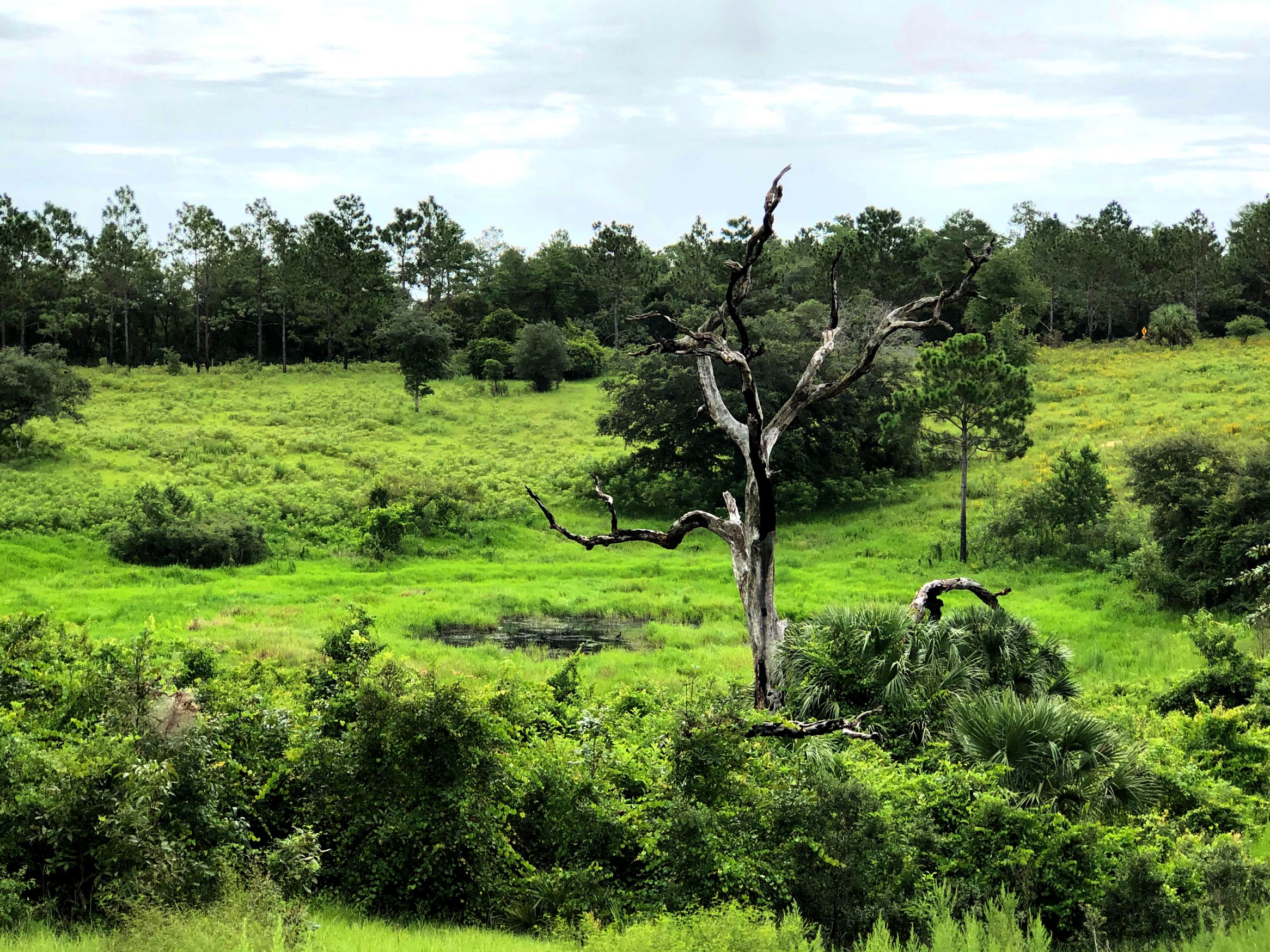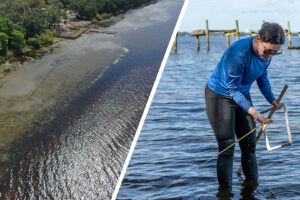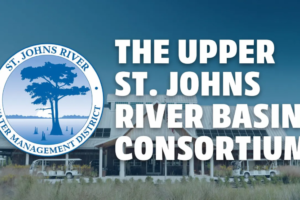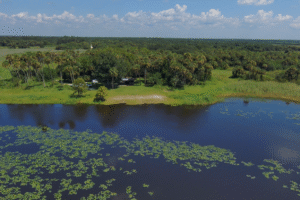Could sinkholes help us
replenish our water supply?
Sunnyhill Restoration Area sinkhole studied as aquifer recharge site
For all the things we celebrate about Florida — balmy winters, crystalline springs, swaying palm trees — there are a few infamous drawbacks. For example, sinkholes. We grab the national headlines every time a sinkhole devours a home in a subdivision or drains a lake dry.
Sinkholes receive a bad rap but rarely get noticed for doing good. St. Johns River Water Management District scientists contend that, under ideal conditions, sinkholes may serve a beneficial purpose as potential paths for augmented recharge to Florida’s aquifer system, the source of most of our drinking water.
District scientists are conducting a feasibility study at a large sinkhole in Sunnyhill Restoration Area, a 7,700-acre District property in the historic Ocklawaha River floodplain in Marion County.
“Sinkholes have a bad connotation,” says St. Johns River Water Management District Hydrologist Don Lee. “This is a situation where a sinkhole would actually have a benefit.”
Within the District’s 18-county jurisdiction, virtually all potable (drinking) water supplies come from Florida’s aquifer system, found in what is called Karst geography. Karst is formed when soluble rocks such as limestone are eroded by water. The result is a topography with ridges, caves, springs and sinkholes. Aquifers are underground rock formations or sedimentary deposits porous enough to hold water. Most aquifers are naturally recharged by rainfall or other surface water that infiltrates into the ground. However, heavy groundwater pumping and extended dry periods can adversely impact water pressure underground and consequently, spring flows and water levels in streams, rivers, lakes and ponds.
“Recharging the aquifer can have many benefits, including preventing saltwater intrusion in coastal areas, improving spring flows as well as the hydrology of lakes and wetlands,” says Dr. David Hornsby, manager of the District’s Bureau of Water Resource Information. “We’re taking advantage of the sinkhole’s natural recharge capabilities instead of drilling a (recharge) well.”
Work began in 2019, when scientists identified two sinkholes at Sunnyhill as possible recharge candidates. The first step was a desktop analysis and field work to determine the depth, size and consistency of the sinkholes. They chose a sinkhole with a quartz sand bottom (which allows water to percolate easily) that had breached through the thick confining layer of natural clay to the Upper Floridan aquifer, Lee says.
Lee explains that a sinkhole occurs when the limestone aquifer collapses beneath the weight of the sediment above.
“The top of the cave is too weak to support the sediment and it collapses,” he says. “The sinkhole is like a coffee filter full of nice, clean quartz sand.”
In December 2019, with data in hand and monitoring wells in place, the team pumped more than 20 million gallons of water into the sinkhole over several days, Lee says. Their water source: fallow agricultural land where water from the Ocklawaha River is stored. They pumped water uphill from the water storage area through 1,000 feet of pipe to the sinkhole.
Now, it’s a matter of monitoring water pressure (levels) to determine whether recharging the Sunnyhill sinkhole positively impacts area springs and water bodies, Hornsby says.
The District isn’t focusing its energy into just one enhanced recharge project, however. Similar recharge projects are in various states of study in places such as the Lake Apopka North Shore, the Hawthorne area, a borrow pit near Blue Spring in Volusia County and elsewhere.
Lee explains that the District’s multitude of projects illustrates the agency’s ongoing work to ensure Florida’s need for water supply doesn’t outstrip the aquifer’s ability to provide water without causing harm to the state’s natural systems.
“If we hit critical levels in our water supply, utilities can’t pump,” he says. “We never want to reach the point to where we’ve squeezed all the water out of the sponge. There are two choices: Don’t pump as much or use another source of water. We’re looking at many other sources. Florida gets a lot of rain, so it makes sense to harvest rain and not allow it run out to the ocean.”






